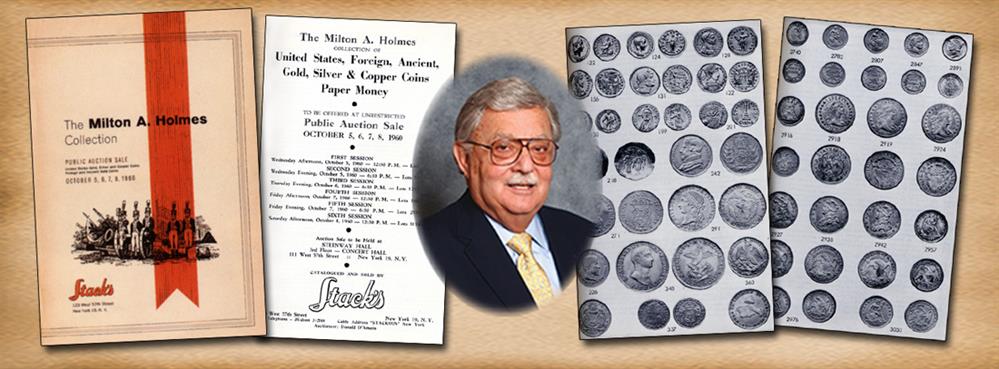
As we review many catalogs received each year we see the term "old time collection” used and are often asked, "What is that?"
In general, the phrase, “old time” refers to a collection formed over a period of 30 to 40 years, held by a single collector or his family. However, my definition is more extensive. Going back to the beginning of the growth of coin collecting, which seemed to start with the public putting away a few pieces here and a few there, we should consider that the development of coin collecting in the beginning of the 20th century in America mirrored the development of wealth at that same time.
Massive numbers of immigrants to America brought with them silver and gold coins from many foreign countries. Some of these were exchanged for American coins but others were kept as souvenirs from where they came from. In either instance, these could be considered a store of wealth. As interest grew, some decided to make the coins into collections and it became a hobby for those who could afford to retain them. In the early 20th century different dates of silver and gold coins could be found in circulation and many sought out the challenge of finding a complete collection.
I could list scores of names of collectors who formed “old time” collections during this period. However, I would like to use a collection that Stack’s sold in 1960 as an example. It was formed by Milton A. Holmes, an industrialist who had the extra wealth to acquire items to enhance his collection, which he started some four decades before his death in 1960.
Examining the collection formed by Milton A. Holmes leads one to believe that there must have been relatively few who were interested in general coin collecting at the time. For Proof coins struck from 1858 to 1915 (when the mint temporarily ceased making Proof coins), the number struck each year was basically 1,000 or fewer in silver and gold, and somewhat more in copper and nickel. There were always some left in the Mint’s vault, and in the late 19th century one could still buy earlier issues. So, it is evident that those who collected were a small number. Milton A. Holmes was able to acquire many of his coins at close to metal value. He always talked of "collector’s luck" when he was successful in acquiring, either from private sale or an early auction, a specimen he had sought for a period of time.
During the early 20th century there weren’t many places to get coins for collections. Few dealers existed, mostly in larger cities and hardly any pricelists were available. Only a few dealers conducted auction sales, as they often bought collections outright and sold the pieces to their clients. The pickings therefore were slim even though more coins were around. In the Holmes Collection there was an occasional coin acquired from early auctions conducted by the Chapman brothers, Tom Elder, B. Max Mehl, and MacAlister and a bit later from Wayte Raymond and the Stack brothers.
There were few sources of information circulating during the early 20th century. There was The Numismatist (the official magazine of the American Numismatic Association), the Coin Collector Journal, and a few textbooks. So again, the hunt to find items of interest and information was not easy. On occasion a collector had the opportunity to buy from a contemporary collector some or all of a collection, but that was rare. Again Mr. Holmes would call such a situation ‘collector’s luck.’
To illustrate the growth of coin collecting at this time, the American Numismatic Association, which had first started with a few hundred collectors grew to nearly 1,000 by the early 20th century. Still conventions were scarce and communication between numismatists could be difficult. Mr. Holmes had to take his time in finding items and building his collection; thus a collection such as his could take decades to assemble. It took dedication to try to complete a series or even to get examples from the Philadelphia or branch mints. This dedication is what, in my mind, sets apart these "old time" collections and makes them so important.
A survey of the Milton A. Holmes Collection would show that his interests started with Ancient coinage. The collection included extensive gold coins of the world, (some 1,500) and coinage of the United States from the Colonial period to modern times in silver, gold and copper. The United States collection was vast and contained over 1,000 gold coins and nearly 2,000 lots of silver, nickel and copper, which included some duplicates. Next week I will talk more about what could make up an "old time” collection.





